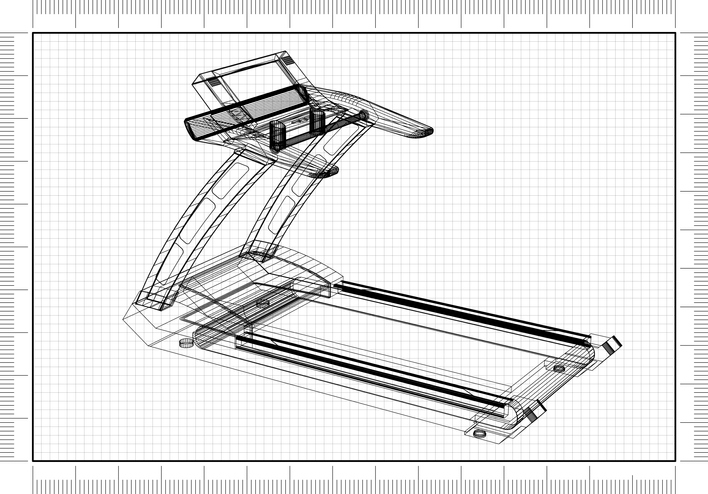
The America Invents Act (AIA): Impact on Patent Law

Green Skies: Patents in Aerospace Sustainability and Fuel Efficiency

Genetically Modified Crops and Patent Law: Legal Considerations

Robotics and Patent Law: Intellectual Property Protection for Robotics Innovations

Quantum Computing Patents: Navigating Uncharted Legal Territory

3D Printing and Intellectual Property: A Patent Law Overview

Patent Panic? Don’t DIY! Why You Need a Patent Pro to Handle Your Invention’s Legal Loopholes
Alright, fellow innovators, buckle up because we're about to embark on an epic journey through
the wondrous world of patents! So, you've stumbled upon this stroke of genius that's going to
revolutionize the world, huh? But before you start drafting your acceptance speech for the Nobel
Prize, there’s a little thing called a provisional...
The Four Pillars of Patentability: Ensuring Your Invention Qualifies
In the realm of invention and innovation, the path to securing a patent is guided by four critical pillars: novelty, non-obviousness, utility, and eligible subject matter. These pillars form the foundation of what makes an invention patentable. They serve as benchmarks to evaluate whether an idea not only sparks interest but also...

Best Marketplaces to Buy/Sell Patents in 2024
Are you a talented inventor with more of a passion for inventing than running a business and competing in the market?
Or maybe you’re a business person looking to either buy out competing patents or get the rights to something that would be perfect for your brand.

US Patent Requirement #1: Subject Matter Eligibility
Determining patent subject matter eligibility is a crucial initial step in securing a patent. This criterion is not about novelty or uniqueness; it's about making sure that your idea or innovation fits into a category deemed patentable by law. Many inventors face challenges when their creations, while innovative, don't align with...

US Patent Requirement #2: Novelty
Novelty in patent law often brings to mind whimsical ideas like oversized pencils or unique ice cream flavors. However, in the realm of intellectual property, it represents an important and complex requirement. While the concept seems straightforward—your invention must be new—it involves meeting certain legal standards to establish its uniqueness. Understanding...

US Patent Requirement #4: Non-Obviousness
When it comes to securing a patent in the United States, fulfilling the requirement of non-obviousness often presents a significant challenge. This criterion, crucial in patent law, hinges on the question: Could someone with an ordinary skill level in the relevant field conceive and build the invention based on existing knowledge and...

How to Patent an Idea in 13 Steps
The real answer to this question is: you can’t.
That’s right, you can’t get a patent for an “idea” alone, not even the best idea in the world.
My name is J.D....

US Patent Requirement #3: Utility
In the United States, the utility requirement for patent applications mandates that an invention must be practical and useful to qualify for a patent. This criterion, focusing on tangible benefits and applications, is met by most inventions, reflecting a broad acceptance of what constitutes usefulness in the realm of patent law. It...
Understanding the Patentability of Mathematical Algorithms
In a world increasingly driven by technology, mathematical algorithms form the backbone of numerous innovations. You might be wondering how these formulas fit into the legal landscape of patents. This topic explores the unique challenges and criteria that come into play when considering the patentability of mathematical algorithms, shedding light on...
Protecting Gaming Ideas: The Role of Patents
In the world of gaming, your unique ideas are your greatest asset. Protecting these innovative concepts is crucial in a competitive market. Patents play a pivotal role in safeguarding your creative work, ensuring your vision remains exclusively yours. Understanding the intricacies of patent law can be the key to maintaining the...
Patent Search Strategies for Startups and Inventors
Embarking on a patent search can feel overwhelming for startups and inventors. How do you ensure your groundbreaking idea is truly unique and protected? Grasping effective patent search strategies is important, not only for legal compliance but also for securing your creative efforts. Mastering these strategies ensures your innovation is both...
Leveraging Provisional Patents in Startup Development
The early stages of a startup can be fraught with challenges, especially when it comes to protecting your innovative ideas. This is where provisional patents come into play, offering a practical and cost-effective solution. Understanding how to leverage these patents effectively can be a game-changer, safeguarding your intellectual property and giving...

Intellectual Property Challenges in the Consumer Electronics Industry
The consumer electronics industry is a hotbed of innovation, constantly pushing the boundaries of technology. But have you ever considered the intellectual property challenges that come with such rapid advancement? Protecting your creative ideas in this fast-paced sector is crucial, yet it presents a unique set of complexities.

The Life Cycle of a Utility Patent: From Filing to Grant
Have you ever wondered how your inventive ideas can be legally protected? Securing a utility patent is a key step for inventors and businesses in safeguarding their creative work. It involves a sequence of strategic choices and thoughtful planning, ensuring that your unique innovations gain the legal recognition and protection they...

The Importance of Design Patents in Hardware Innovation
In the fast-paced world of hardware innovation, design patents stand as a crucial tool for inventors and companies. These legal instruments protect the unique visual characteristics of a product, distinguishing it in a competitive market. Whether you're a budding inventor or a seasoned entrepreneur, understanding the value of design patents in...

Protecting E-Commerce Innovations: A Guide to Business Method Patents
In today’s digital marketplace, the protection of innovative e-commerce ideas is crucial. Have you considered how business method patents can safeguard your online inventions against competitive threats? Obtaining a patent is essential to transform your e-commerce solutions into protected intellectual property. It’s not just about gaining a competitive edge; it’s about...

Navigating FDA Regulations for Medical Device Patents
Are you venturing into the innovative world of medical device patents? The landscape of FDA regulations can be complex and challenging to navigate, yet it plays a critical role in the journey of bringing your invention to the market. These regulations ensure that your medical device not only meets the necessary...

Legal Considerations for Fitness Equipment Design Patents
In the fast-evolving world of fitness equipment, protecting your innovative designs is crucial. A design patent ensures your creative work remains uniquely yours, safeguarding its aesthetic appeal and distinctiveness. Understanding the legalities surrounding design patents can be the key to maintaining a competitive edge in the fitness industry.

Detecting and Preventing Patent Infringement: Best Practices
Have you ever wondered how your unique ideas and inventions can be protected in today's fast-paced and highly competitive market? Patents play a crucial role in safeguarding your intellectual property, but what happens when someone encroaches on these rights? Understanding the landscape of patent infringement is not just about legal compliance, but...